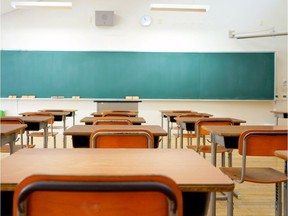Yesterday
HOUSTON (Reuters) - The U.S. Fifth Circuit Court of Appeals in New Orleans on Tuesday upheld a $14.25 million judgment against Exxon Mobil Corp for pollution from its Baytown, Texas, refining and petrochemical complex.

View of the Exxon Mobil refinery in Baytown, Texas
© Reuters/Jessica Rinaldi
The judgment stems from a U.S. Clean Air Act lawsuit brought by two environmental groups, Environment Texas and the Sierra Club Lone Star Chapter.
This is Exxon’s second appeal of a Houston U.S. district court’s ruling that Exxon was responsible for repeated releases of pollution from the refinery and chemical plants in Baytown.
Exxon stipulated the Baytown complex had 16,286 days of violations between October 2005 and September 2013, which included multiple simultaneous violations.
“While we respect the court’s opinion, we disagree with the decision,” said Exxon spokeswoman Julie King. “We have acted responsibly and in accordance with regulatory requirements. We are reviewing the decision and considering next steps.”
Luke Metzger, executive director of Environment Texas, called on Exxon to accept the repeated decisions in the case against the company.
“After 13 years of litigation – including a three-week trial, two appeals, two remands of the case to the trial court for additional findings, and three appellate decisions against them – it is long past time for Exxon to accept responsibility and finally pay what it owes to the public for years of illegal, toxic pollution,” Metzger said.
The case was brought by the two groups under a provision of the Clean Air Act that allows citizens to sue when government agencies have failed to prevent pollution.
(Reporting by Erwin Seba; editing by Richard Pullin)
The judgment stems from a U.S. Clean Air Act lawsuit brought by two environmental groups, Environment Texas and the Sierra Club Lone Star Chapter.
This is Exxon’s second appeal of a Houston U.S. district court’s ruling that Exxon was responsible for repeated releases of pollution from the refinery and chemical plants in Baytown.
Exxon stipulated the Baytown complex had 16,286 days of violations between October 2005 and September 2013, which included multiple simultaneous violations.
“While we respect the court’s opinion, we disagree with the decision,” said Exxon spokeswoman Julie King. “We have acted responsibly and in accordance with regulatory requirements. We are reviewing the decision and considering next steps.”
Luke Metzger, executive director of Environment Texas, called on Exxon to accept the repeated decisions in the case against the company.
“After 13 years of litigation – including a three-week trial, two appeals, two remands of the case to the trial court for additional findings, and three appellate decisions against them – it is long past time for Exxon to accept responsibility and finally pay what it owes to the public for years of illegal, toxic pollution,” Metzger said.
The case was brought by the two groups under a provision of the Clean Air Act that allows citizens to sue when government agencies have failed to prevent pollution.
(Reporting by Erwin Seba; editing by Richard Pullin)







